By Brandes Elitch
Photos by Hugues Vanhoolandt
I can safely say that the annual Pebble Beach Concours is the most famous and prestigious show of its type in the world. Someone said that being chosen to show your car here is akin to being nominated for an Oscar. In this column, I will try to explain why this is the case.
At the outset we should recognize that this is a charitable endeavor. Last year, the show raised $2.1 million dollars, all of which stays on the Peninsula. Over the last 30 years, it has raised over $27 million for over 80 local organizations. An admission ticket costs $450 the day of the show.
The Monterey Peninsula (100 miles south of San Francisco and 240 miles north of Los Angeles) is one of the most iconic tourist destinations in the U.S. Over 4.6 million visitors arrive annually to experience the natural beauty, and attractions such as the Seventeen Mile Drive, Big Sur, Carmel, the Monterey Bay Aquarium, and Cannery Row.
This year is the centennial year for the Pebble Beach Company, which manages three Inns and four of the most famous golf courses in the country (the 119th U.S. Open Championship played there this year). It is the 69th year for the Concours. There were 200 cars, a quarter of which were from overseas.

1907 Renault XB Labourdette. This car was built on a long chassis with a transformable landaulet body with an enclosed rear compartment just for two people. It is an original car that could be described as a time capsule, an astonishing find.
As I described it in my column last year, the show bears the historical imprint of four people: Lorin Tryon and Jules Heumann, who re-invented it to some degree, and Bill Harrah and Jack Nethercutt, who set the judging standards. Today, credit also goes to the Chairwoman, Sandra Button.
Over time there has been a shift in the cars on the show field. In the past there were more big touring cars and formal coachwork, mostly prewar. Jules Heumann preferred cars that had a chauffeur. Now half of the entrants are postwar and there are a lot of sporting cars. Newer collectors want a car with provenance, or a significant race history. A story or a person behind the car humanizes it and personalizes it.
This year, a big element was the Centenary of Bentley, with 6 classes, 54 cars, an early 3 liter, including the first car, the 4.5 liters, all the 3 Speed Six Le Mans team cars, the Blue Train, the Embiricos Bentley, and the poster car, an original 8-liter Vanden Plas tourer.
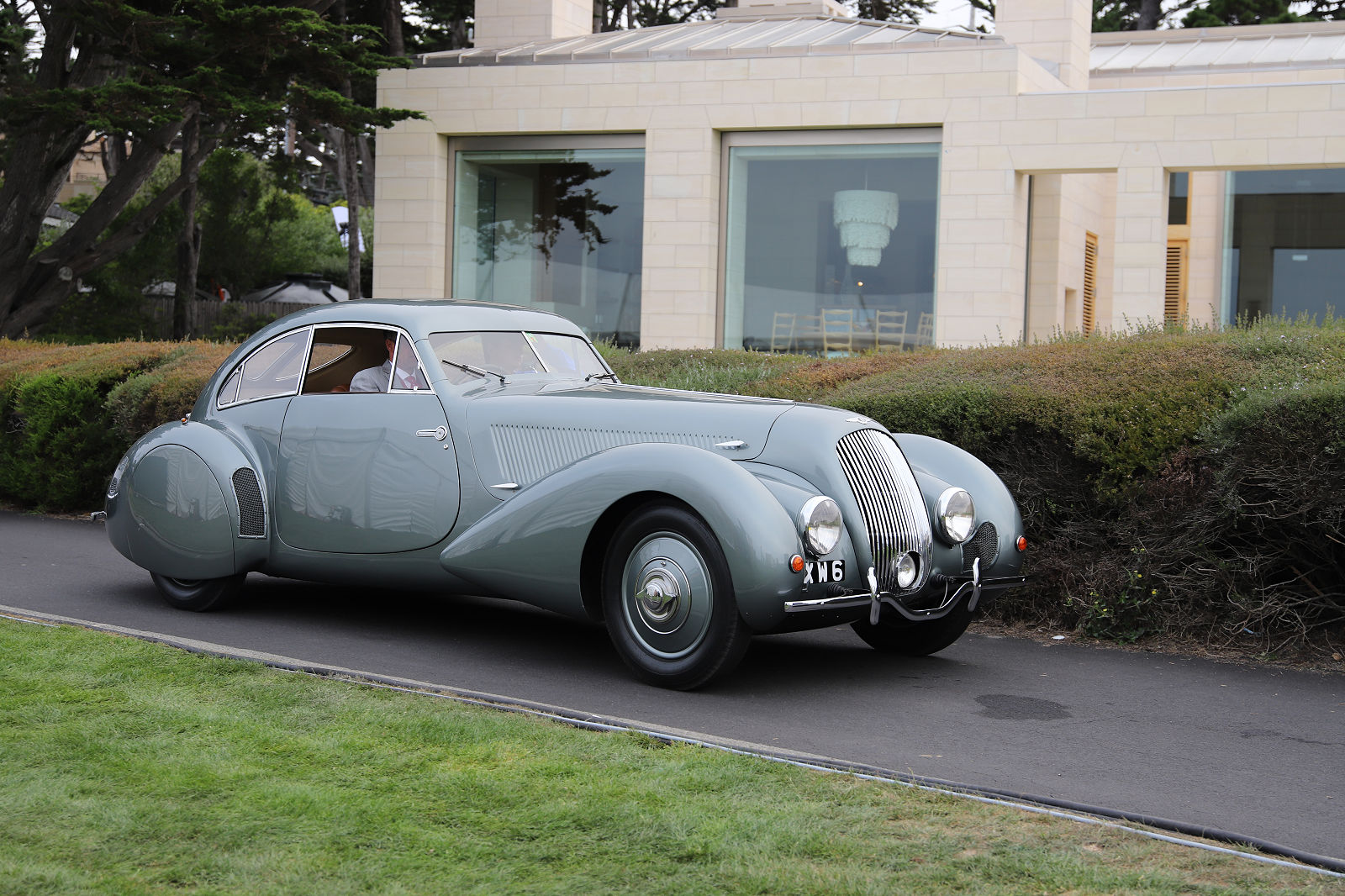
1938 Bentley 4.5 liter Pourtout Aerodynamic Coupe (the Embiricos Bentley). Certainly one of the most iconic Bentleys, this car is owned by the Keller Collection right near my office here in Petaluma, California. Embiricos was the original owner. The body was built by Pourtout out of Duralumin, and designed by dentist and Resistance hero Georges Paulin. Paulin took great pains to perfect the wind resistance and create an aerodynamic ideal. When it was ten years old and had racked up over 100k hard miles, it was entered in the 1949, 1950, and 1951 LeMans 24 hour race where its best result was a sixth place finish.
It is also the Zagato centennial. Zagato, still run by family members, shows what a coachbuilder can do with completely different cars and still maintain their own identifiable mark, even with a wide range of marques and models.
This is the 110th anniversary of Bugatti, and all four of the Grand Prix Type 59s, never before seen together, were here.
One of the most iconic racecars is the French Ballot, designed by Ernest Henry, and there were 3 on the field. The first Ballots were built for the 1919 Indianapolis 500, a team of four, five liter, straight-eight racers. They were the fastest cars in practice, but had mechanical issues. Ballots were raced throughout the twenties in Europe and the U.S. In 1931, Ballot was incorporated into Hispano-Suiza.
Another star is the Lamborghini Miura, designed by a 22-year old Marcello Gandini in 1966. It changed the way people thought about Italian car design.
For the first time, I showed up at the entrance to the 18th green at six in the morning to see the cars come on the field. They arrive single file, and Chairwoman Button personally greets each one, and gives the driver instructions and a gift. This went from about 6:15 to about 7:30. If I do this again, I will bring a winter coat. Well, the most stirring sight was when the Thomas Flyer, winner of the 1908 New York to Paris race, the actual car, came around the corner with 4 people perched up high, and a huge American flag waving in the back. I got a lump in my throat when that happened.

1908 Thomas Flyer. In February, 1908, a quarter of a million people packed Times Square in New York to see the start of the New York to Paris race. Six cars from four countries left for a 22,000 mile journey, and after 169 days, the Thomas was victorious, beating the other cars by almost a month. This is one of the greatest stories in the automotive history.
The Best of Show winner falls into this type of emotional experience. In choosing this, a panel of senior judges, different from the 100 technical judges, vote on a car that they feel is the “most magnificent example of automotive excellence,” or as Chairwoman Button says, “It makes their hearts sing!”
A bit more perspective: there are 29 separate classes and a total of 107 class judges! This is a lot to manage. The cars are judged on style and elegance, technical merit, ownership history and provenance, originality, and the accuracy of the restoration. A car may only be shown there once every ten years, and in the selection committee prefers that when a car is restored it is shown there before it is shown elsewhere.
As you might imagine, only a small percentage of entrants are chosen. There might be a hundred applicants for only 7 or 8 cars in a class. The judges meet together and review the applicants, and a judge must disclose any potential conflicts of interest or bias. Before they meet in person, the judges will have studied the photos and documentation of each applicant and done some research. Of course, cars that fit that year’s theme are of particular interest because each year anniversaries are celebrated. Not to put too fine a point on it, but this is serious business.
Unlike some shows, where you might look at every fourth or fifth car, here you will look at every car on the show field. In doing so, I found a few that I particularly liked, and I will describe them. Our photographer, Hugues Vanhoolandt, came over from Belgium for his thirteenth year, and the photos are his. We are so fortunate to have Hugues onboard; he has a million-image archive!
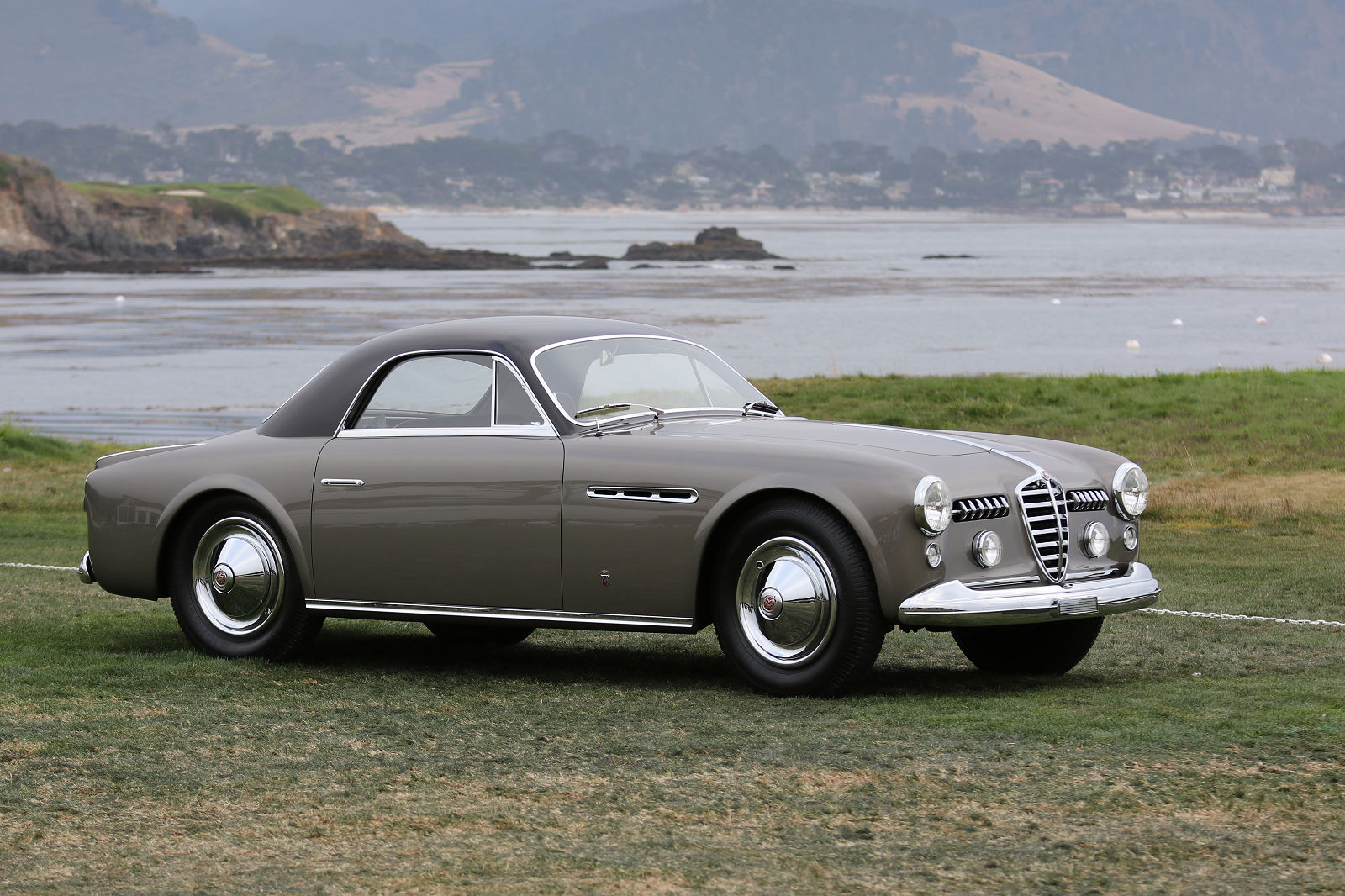
1950 Alfa Romeo 6C 2500 Ghia Supergioiello coupe. This is one of four “jewel” coupes built by Ghia, and is the only one built on a tubular chassis built by Gilco Milano, the company owned by Gilberto Columbo. This is strikingly beautiful.
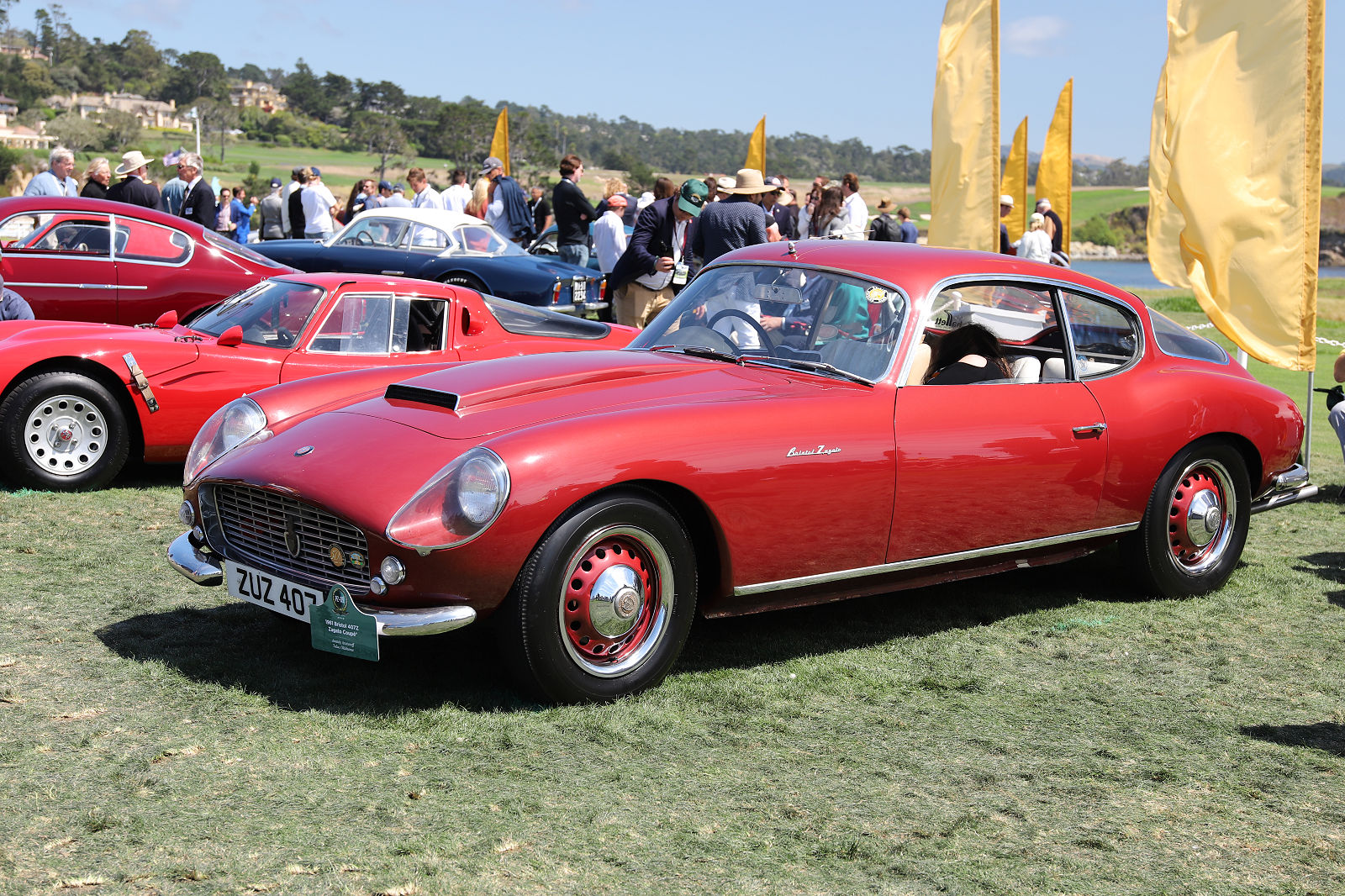
1961 Bristol 407Z Zagato, owned by Toly Arutonoff. Surely everyone who reads VT knows Living Legend Toly, who saw a photo of this car in a British magazine and immediately decided to get it. It took him another 25 years to track it down and buy it! Tony Crook, who owned the company, was also the British agent for Zagato, and he planned a series of cars. At least six Bristol 406 cars were rebodied by Zagato, and this was the prototype for the Chrysler-engined 407 series, which debuted in the 1960 London Motor Show. It is the only Zagato 407 car.

1957 Ace Bristol. Everyone knows that the AC Cobra is based on the AC Ace, an almost perfect design with a lightweight chassis designed by John Tojeiro. This car resulted from a meeting between Elio Zagato and the Swiss AC agent, who wanted something different, and he got it. The first owner campaigned it, and then sold it to Jo Siffert, the famous Swiss race car pilot. The current owner, Jim Feldman, got it from the wonderful, no longer existing Rosso Bianco collection in Aschaffenburg in 2000 and restored it himself.
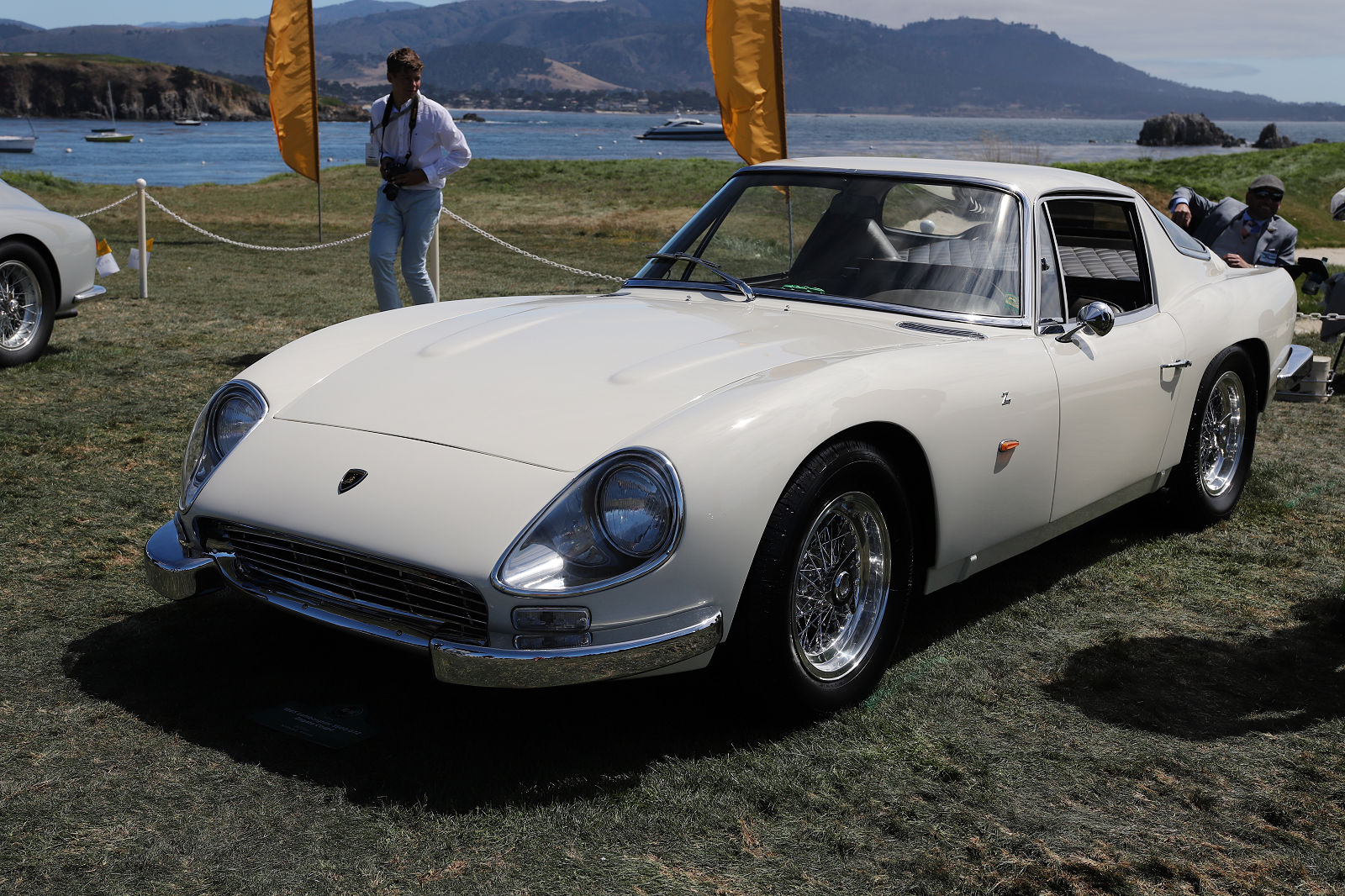
1965 Lamborghini Zagato. The Lamborghini 3500 GTZ was built by Zagato on a shortened 350 GT chassis. It was first shown at the 1965 London Motor Show, and went on to star at the Paris show a few weeks later. The lines were similar to the Zagato Alfa TZ2 race car. The car lived in Italy, Australia (where it was converted to RHD and painted red!), Germany, and now the U.S., and has been beautifully restored.
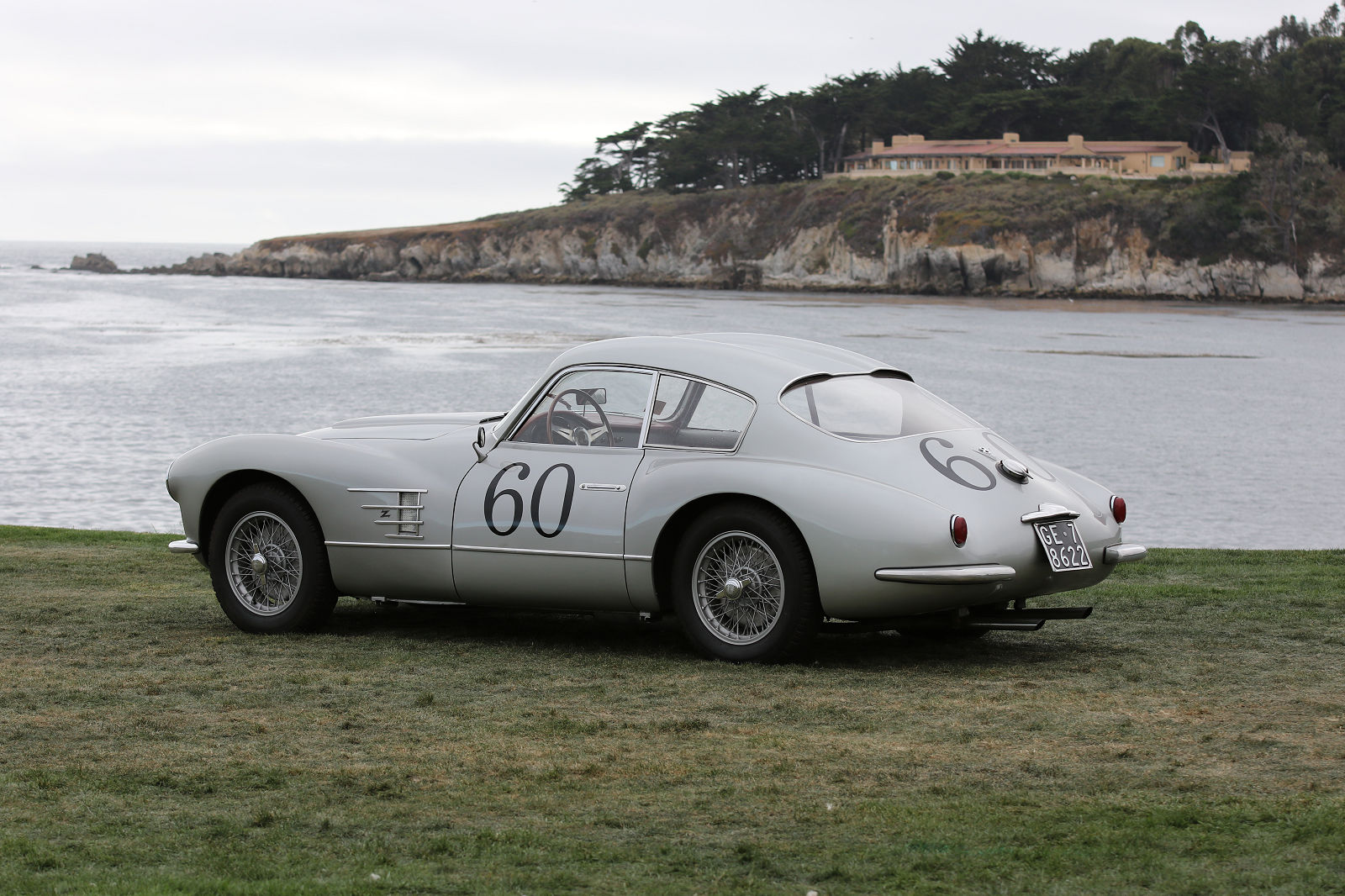
1954 FIAT 8V Zagato. FIAT first showed its 2-liter V-8 at the 1952 Geneva show. Only about 100 cars were made. The factory-bodied cars were designed by chief designer Fabio Rapi. Zagato modified five factory bodied cars and then built another run of 25 cars during 1954, and this is one of them. This is a mostly original car. It was called the 8V because FIAT believed that Ford had a copyright on the term V8!
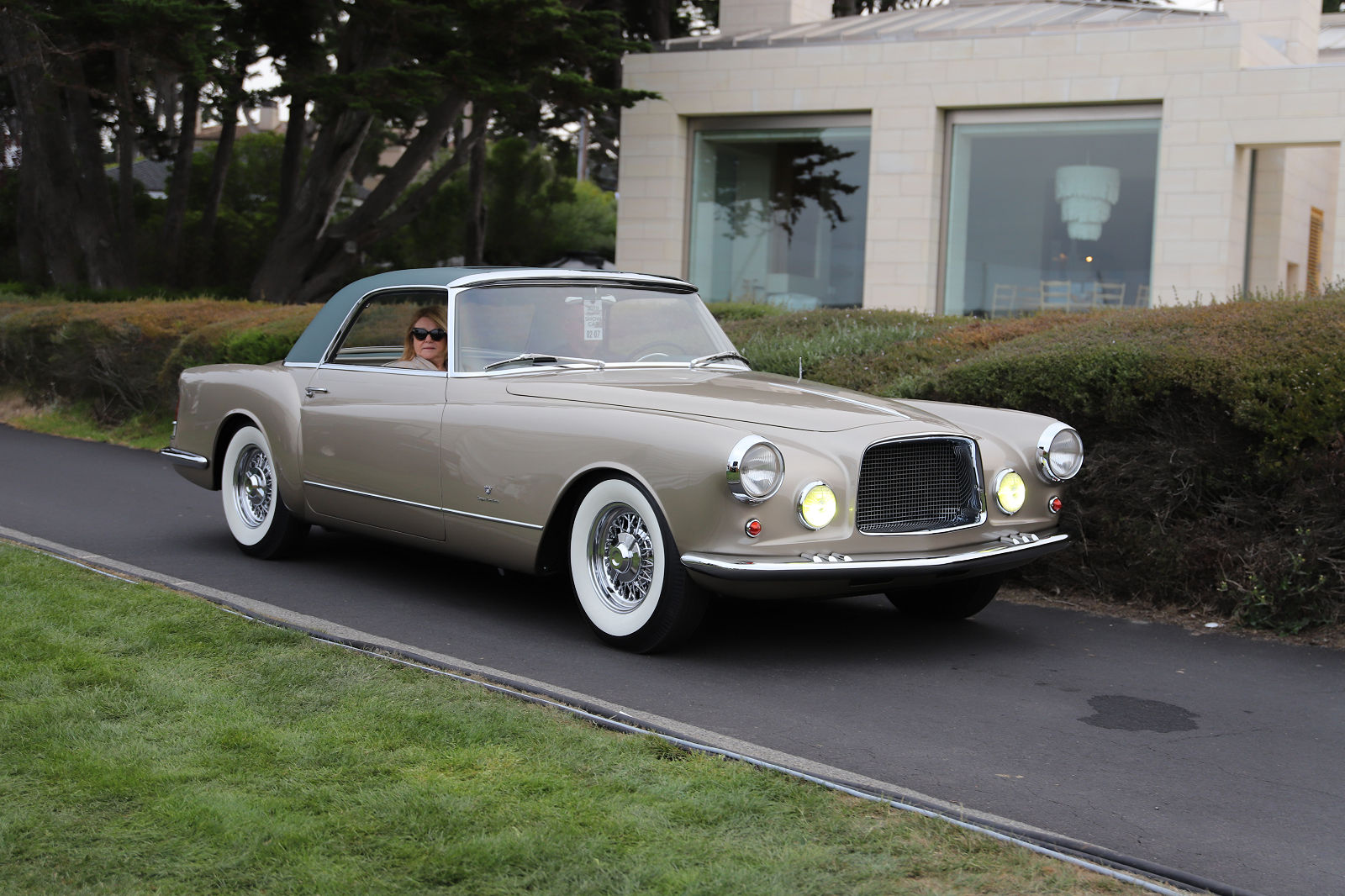
1957 Chrysler 300 B Boano. Now this car stopped me in my tracks – originally ordered by legendary FIAT Chairman Gianni Agnelli, it was delivered new to his brother Umberto, who was the director of FIAT France from 1965 to 1980. The 300 B was a 1955 Chrysler, arguably the first of the modern high performance factory cars, raced with great success. The original frame was shortened for the 2 seater layout. Stunning.
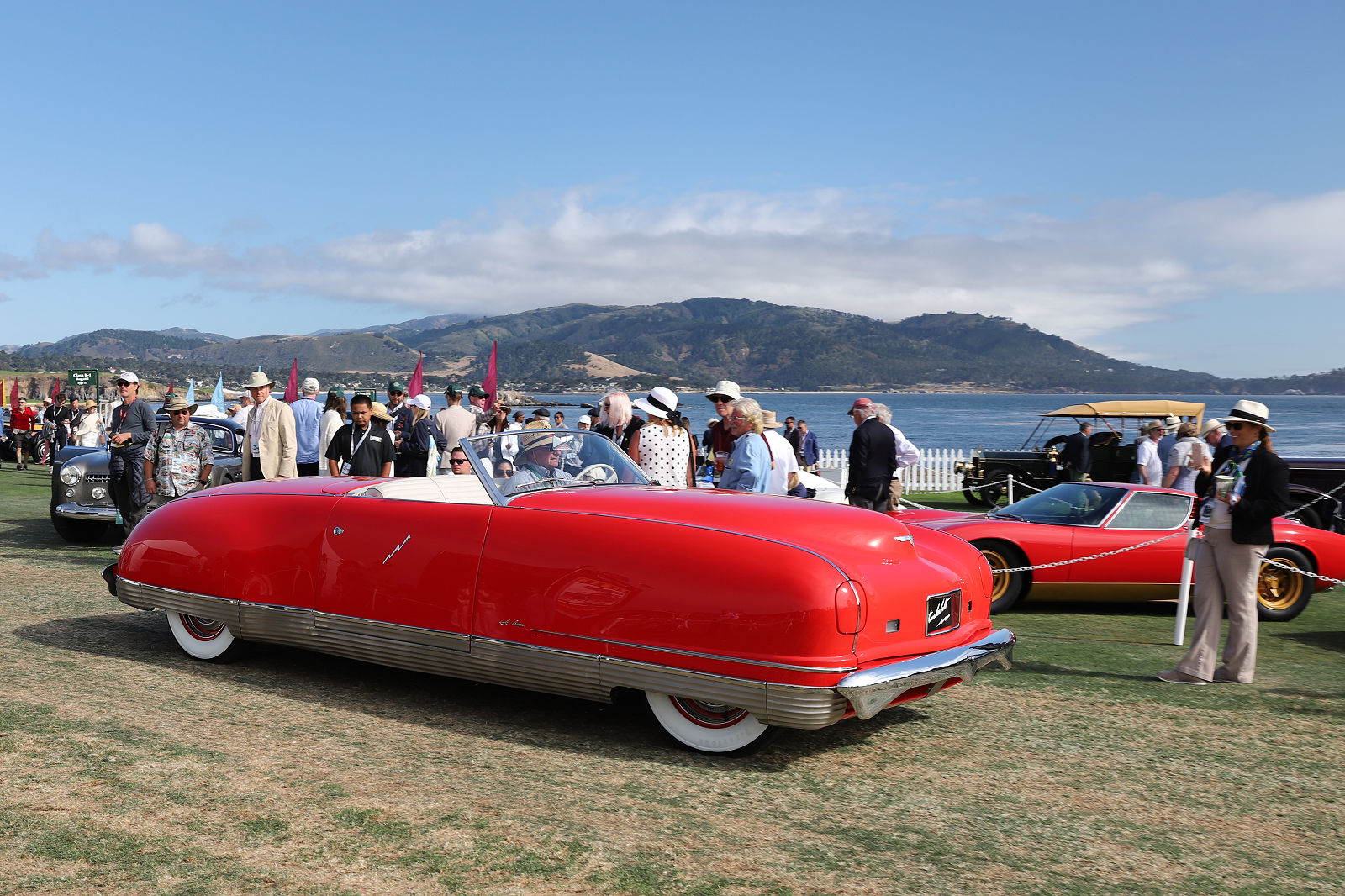
Chrysler Thunderbolt. In 1939, Walter Chrysler hired Alex Tremulis and Ralph Roberts of LeBaron to design and build five examples of the Thunderbolt (four are known to have survived). It dispensed with the traditional radiator grille, and had a fully retractable powered hardtop, hidden headlights and a curved one-piece windshield. This is certainly the most successful “dream car” of the prewar period; nothing else even comes close. What a thrill it must have been to see this in 1939!

1953 Delahaye Faget Varnet. This is the last 135 MS to be delivered before the firm was taken over by Hotchkiss in 1954. It features details that were later seen in the 1954 Facel Vega, which impressed me because I owned an HK 500 for twenty years. This car was intended to be the 1953 Paris show car, but it was not ready in time. It has less than 7000 miles, and was recently restored by Carrosserie Tessier. The owner, Anthony Colle, kindly gave me a copy of an 84 page book which he wrote on the history of the car, which is now a treasured possession.
Of course, I have only touched on all the marvelous things to see at the Pebble Beach Concours. It is almost too much to absorb in just one day. Thanks to Chairwoman Button, the various committees and judges, and everyone else who works so hard to make this come alive, and for the substantial charitable contributions to make the Monterey Peninsula a better place to live.
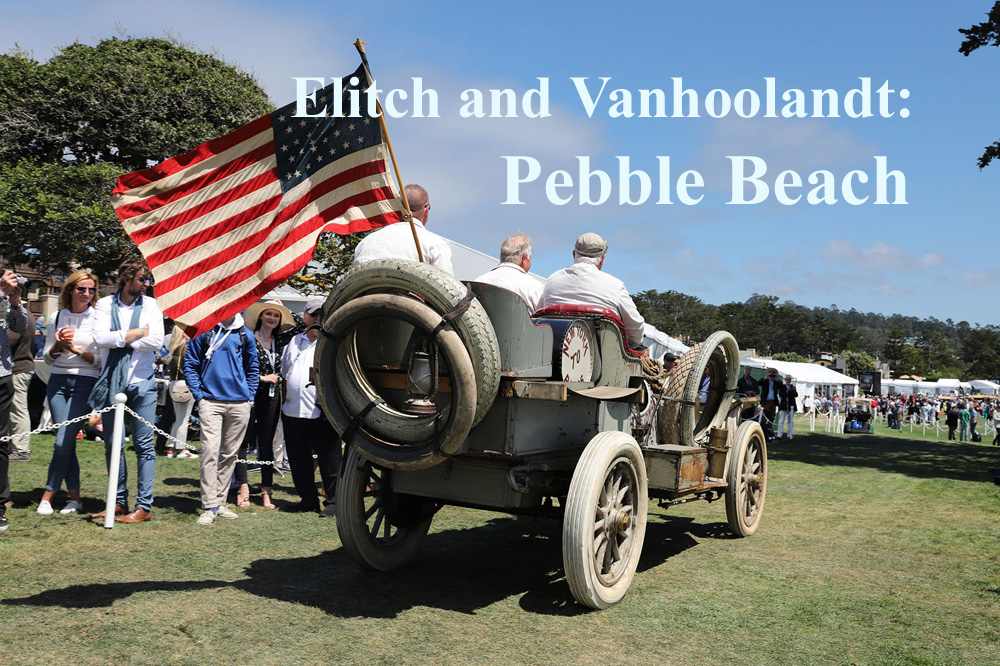
Thank you for the very interesting information on specific cars displayed at Pebble. My husband and I attended this magnificent event, now I know more about the cars that were featured thanks to Mr. Elich’s article!
Wonderful overview. I totally agree with the comments of the Boano bodied 300 Chrysler. I believe it was created from a 1956 300B, the 1955 was a C-300 model. Confusing! This one has the 354 engine with the 355 hp option. The 1957 300C had the 392 engine. One thing for sure, “Johnny” Agnelli had great taste.
Of the 200 cars noted, 180 were listed as on the Pebble Tour on the previous Thursday. Put the Pebble Tour on your 2020 calendar where you can see most of the Pebble cars travel the roads around Carmel at no cost. Just be on Agujito Rd at 8:45am. Then on Ocean Ave. in Carmel around 11 am.
Still the best show coverage ever. it’s like going through college courses on fine automobiles and what they mean. Your fine work is appreciated.
This article as well as all the others written by Brandees highlight his deep-passion for the art and history of the automobile. I had the pleasure of hanging out with him last year on Ocean Blvd after the traditional Pebble tour. Keep writing.
As Chairman of the Docent Program that lead tours on the field at Pebble each year, I applaud your concise yet wholly accurate characterization of the event. Many of us involved are overwhelmed each year with the rare cars and incredible owners and restorers that dedicate their resources to display at Pebble and help us help others. It is true that every car had a story and significant positive in the history and culture of automobiles so you can only imagine our challenge to find that special mix of cars to include on our tours that include first-time guests mixed with collectors and restorers. It is truly a bucket-list item. Thank You.
Readers should note that the firm of Gilco Milano in reference to the lovely 6C2500 Alfa Ghia coupe was a tubing manufacturer of some note. Gilberto Colombo’s father launched the business during WW1 to make frames for Italian fighter aircraft. Gilberto launched his own company to produce welded-up tubular chassis for the vast majority of 1950s-era Ferraris and Maseratis, along with many Alfas and Siatas. Gilco later manufactured smaller-diameter alloy tubing for high-quality Italian-made bicycles. An illustrious but little-known firm.
Peter,
Befoe we published, I did a quick fact finding look through my library to see if I could find a reference to a 2500 Ghia with a Gilco chassis and could only find that most of the coachbuilt 2500s used the factory chassis. Might you know if there is any mention of this anywhere? Sounds like a very interesting 2500! I think there is a book on Gilco but I don’t have it…
Editor